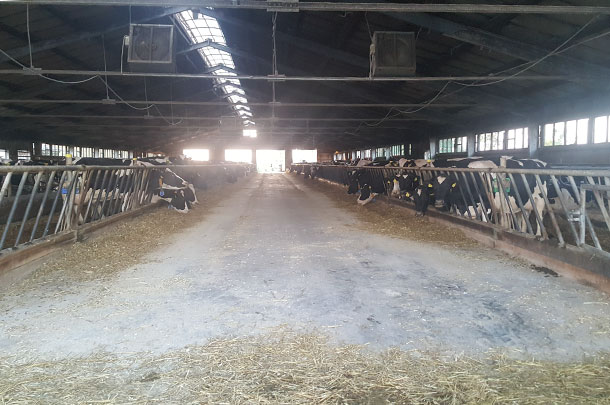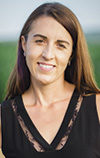Editor’s note: An earlier version of this article was first published in the Delmarva Farmer. Breaking out of our “silos” or “dairy bubbles” is a topic I’ve written about before. It’s crucial to explore other things than just what we do on a day-to-day basis on our farms.
For the past two years, I have been a part of LEAD Maryland, class 10 – an agricultural leadership program through the University of Maryland Extension. In this program, fellows learn about the various sectors of ag within the state – from aquaculture (my favorite) to forestry to rural communities. I’ve learned so much from other farmers and industry professionals all while building my leadership skills through the numerous workshops and classes provided.
Another feature of this program is the International Study Tour. I’d be lying if I said that wasn’t one of the most intriguing parts of the program that encouraged me to sign up. The purpose of the study tour is to learn about and compare agricultural practices in other countries to those here in the U.S. The board of directors decides where each class goes, and this year, Poland was the chosen destination. At first, my entire class was like, “Poland? What’s so special about Poland?” Turns out, a lot.
Poland’s agricultural industry is very diverse. During our 12-day trip, we visited beef farms, dairy farms, orchards, fisheries, equine facilities, a goose farm (goose meat is very popular there), farm equipment fabricators and dealers, and agritourism farms just to name a few. One of the biggest differences was that consumers aren’t as far removed from ag as consumers are here in the U.S., so there isn’t as big of an educational movement in that aspect.

The question I got a lot upon my return to the U.S. was, “Are the dairy farms any different over there?” Short answer: No. They have similar setups from their barns to their parlors and the same goal all of us dairy farmers do: Take exceptional care of our cows and produce a high-quality product. We visited a 100-cow dairy and a 400-cow dairy, the latter being the most similar to my own. There is one thing, though, that is different: the attitudes and outlooks of these farmers on the current and future state of their farms.
The night before visiting the dairy farms, I had the chance to have dinner with and talk to one of the dairy farmers we’d be visiting, Piotr Doligalski. The first thing he asked me after shaking my hand was, “What’s your milk price in the U.S.?” I replied, “Awful. You?” He chuckled and replied, “Awful as well,” and we both laughed lightly as we both knew it wasn’t really a laughing matter, but what can we do? We then pulled out our phones and proceeded to convert and calculate liters to pounds and zlotys (Polish currency) to dollars. Our final figures determined that he was receiving about $3 more per hundredweight than the average farm in the U.S. However, as we talked (with an interpreter), we both shared our struggles in making ends meet, our cost of production and compared how much we each spent on feed, electricity, etc.
He then asked me how I felt about a quota system, as the European Union’s quota was lifted a few years ago, thus being one of the reasons why the markets are awash with milk. I told him (my own opinion) I wish we all had quotas, so we could finally fix our never-ending supply and demand problem. He made me take a step back when he explained how free he felt, not only from oppression from communist rule, which only ended in 1989, that he remembers quite clearly and not fondly at all, but he now has the freedom to actually do what he wants with his herd. He never had that freedom before. He never had the freedom to make the decisions for his herd and his farm that we take for granted here in the U.S. Most of those decisions were in someone else’s hands – mainly the government’s. He can finally grow his herd to where he knows it will be able to provide a better way of life for him and his family. He can finally build his business for the next generation.
I didn’t know what to say in response. Hearing the passion and determination in his voice, even though I didn’t understand the words, made me think. The past three years in the dairy industry have been tough – especially this last year. But I cannot imagine dairying in a communist country and then still having the government control after that with a quota system. And I thought our government was too involved as it is.
It’s no surprise the dairy farms were the highlight of my trip, even though I didn’t see a single Jersey cow. I not only returned home with new connections in the industry, I returned with a new perspective, which I think is what I need most during these difficult times right now. It is the best kind of souvenir to bring home. ![]()

-
Katie Dotterer-Pyle
- Dairy Producer
- Union Bridge, Maryland
PHOTO 1: Katie Dotterer-Pyle had the opportunity to visit two dairy farms during a 12-day trip to Poland.
PHOTO 2: Katie Dotterer-Pyle says the facilities at the operations were similar to U.S. dairy farms. Photos by Katie Dotterer-Pyle.




